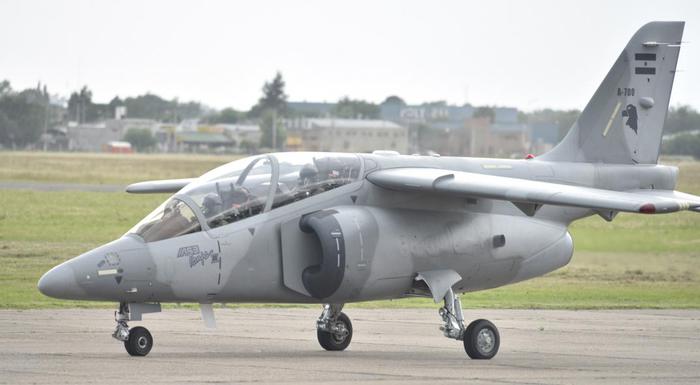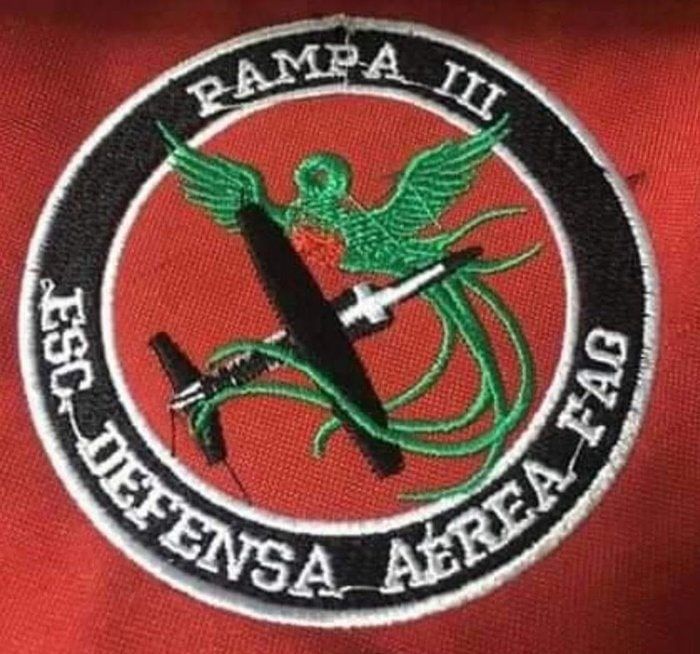Argentina exports the Pampa III aircraft, with combat capacity, to Guatemala
With this sale of Pampa III planes to Guatemala, Argentina will close the FAdeA's first foreign sale. Each Pampa III has a value of close to 12 million dollars.

Each Pampa III has a value of close to 12 million dollars. Guatemalan Defense Minister General Miguel Ralda, his Argentinean counterpart Oscar Aguad and the president of the Fábrica Argentina de Aviones (Fadea) signed the $28 million contract, which includes two IA-63 Pampa III aircraft, the first sale of two aircraft, maintenance support, and the training of pilots and mechanics by the Argentine Air Force.
Guatemalan Defense Minister Miguel Ralda reported through a video recorded in Argentina, that after several negotiations decided to acquire the planes of the southern country responding to the need to modernize Guatemalan aircraft and be able to fulfill the commitments made in the fight against drug trafficking, human trafficking, and international organized crime.
With this agreement, the expected chapter of the sale of two Pampa III planes to the Central American country will begin to close, making it FAdeA's first foreign sale, after this new stage of reconversion, adjustment, and modernization, in which the State also incorporated the private sector as a business factor.
This new version of the aircraft incorporates state-of-the-art components that allow it to fulfill a double function: advanced pilot trainer and light attack aircraft.
"The Pampa had three important evolutions since its first flight, which were the modernization of the cabin with the incorporation of the avionics of the Israeli company Elbit; a second instance that was the remotorization and this third one, in which digital avionics was configured and obsolete equipment was replaced", explained Federico Bima Kronemann, Operations Manager of FAdeA to the Clarin, an Argentine means of communication.
The biggest change is the digitalization of the cockpit, which now operates under the Full Glass Cockpit concept: the Pampa III concentrates all flight information on three large multifunction screens (the Pampa II only had one, on the left side) that replace the analog indicators. The pilot can configure them according to the type of mission to be performed. It is the same format, for example, used by fifth-generation super fighters, such as the American Lockheed Martin F-22 Raptor.

For the role of light attack aircraft, the Pampa has five supports (four on the wings and one under the fuselage) that allow the placement of pods (detachable containers) with weapons: from a 30-millimeter cannon to different types of bombs, machine guns, and rockets. A combination that makes it ideal for countries that do not have funds (or even conflict hypotheses) that justify the incorporation of high-performance fighter-bombers.
"The Pampa III is very versatile, with a very competitive cost per hour of flight, below 1,500 dollars, and is at the same level as the planes made today in Italy, the Czech Republic, and South Korea. And for the features it has and the flight envelope it has, added to its cost, is a super competitive aircraft," explains Antonio Beltramone, president of FAdeA.
The possibility of projection of the Pampa III is based on developments that add potential to the aircraft. One of the most outstanding is the flight simulator, created entirely in FAdeA and which is in the development phase. The structure is mounted on a real Pampa and gives shape with a large screen: there is flight sound and a screen with a field of vision that exceeds 140 degrees.
On one side is the "instructor" post. It is in charge of "complicating" the pilot's flight. "He can simulate failures: a problem in the landing gear, an engine problem. In this way, the pilot is trained in simulated conditions before the possible emergencies he may have in real life", says Sebastián Serrudo, head of the Engineering Division. "The entire mission is recorded so that the pilot can then analyze what his flight was like".
With this, the Argentine Aircraft Factory resurfaces with its star product the Pampa III, the advanced training aircraft with combat capabilities, designed and built in Argentina initially by the Military Aircraft Factory and with the assistance of the German company Dornier Flugzeugwerke in the 1980s.
Thus, Fadea, in the government of Mauricio Macri, managed to revert the adverse situation he was going through, carrying out arduous work in three strategic areas: financial reorganization, production reactivation, and generation of new clients. Its first objective was to provide the Argentine Air Force with three Pampa III aircraft after ten years without delivering new aircraft, with a 10% growth in the use of national components in production.
n addition, it is expected that in 2019, revenue will grow 25% from the certification of new capacities and the closing of contracts related to the maintenance of commercial aviation, the production of wind turbines, and the sale abroad of Pampa III, unprecedented business for the company.
The IA-63 Pampa III has space for two crew members, a length of 10.9 meters and a wingspan of 9.7 meters. It reaches a maximum speed of 880 kilometers per hour, with an efficiency of 2,357 kilometers and a ceiling of 12,900 meters.
Throughout its history, it received 3 modernizations: the first of them was an avionics upgrade that resulted in the Pampa II in 2005. Later, in 2011, it was re-motorized giving birth to the Pampa II-40. Currently, the IA-63 Pampa III incorporates the advanced Full Glass Cockpit and Data Link system.




